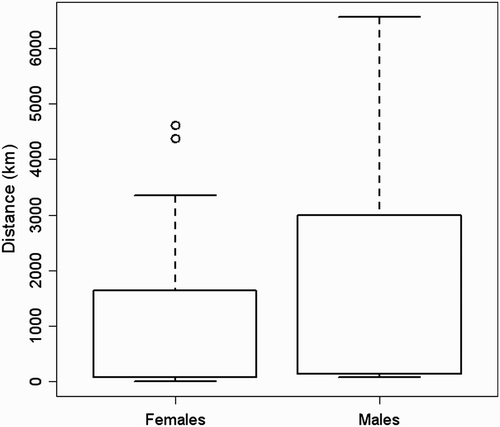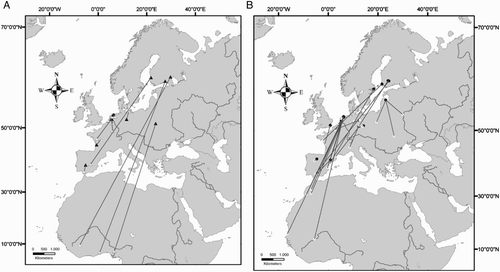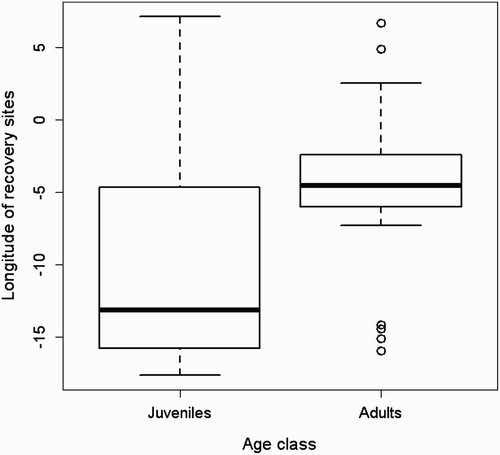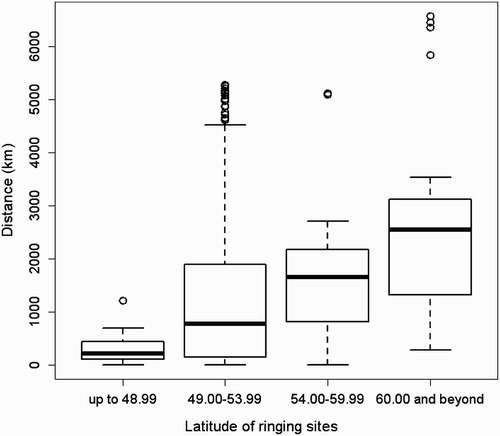Figures & data
Table 1. Spatial and temporal characteristics of the ringing recoveries data set used in the present study.
Figure 1. Map showing ring and recovery sites of Eurasian Marsh Harriers breeding in Europe (black = ringing sites, white = recovery sites). A, circles = individuals coming from areas located south of 49°N; triangles = individuals from Great Britain and northern France. B, individuals from Belgium and Netherlands. C, individuals from Germany, Poland, former Czechoslovakia. D, circles = individuals coming from areas located north of 60°N; triangles = individuals breeding in the area included between 54° and 59.99°N.

Figure 2. Migratory distances of male (n = 13) and female (n = 30) Eurasian Marsh Harriers. The bottom and top of boxes show the 25 and 75 percentiles, respectively. The horizontal line joined to the box by the dashed line shows the maximum and the minimum range of the data. Points are outliers.

Figure 3. Ring and recovery sites of male (a) and female (b) Eurasian Marsh Harriers (black = ringing sites, white = recovery sites).

Figure 4. Longitudes of wintering sites located south of Sahara desert of juvenile (n = 20) and adult (n = 21) Eurasian Marsh Harriers. The horizontal bold lines show the median longitude of wintering site for each category. The bottom and top of boxes show the 25 and 75 percentiles, respectively. The horizontal line joined to the box by the dashed line shows the maximum and the minimum range of the data. Points are outliers.

Figure 5. Graph showing the relationship between the lengths of the migratory journey in relation to the latitude of the breeding site. Latitude bands and sample size: up to 48.99°N = 13; 49.00–53.99°N = 261; 54.00–59.99°N = 20; 60.00°N and beyond = 26. The horizontal bold lines show the median migration distance of each latitudinal slot. The bottom and top of boxes show the 25 and 75 percentiles, respectively. The horizontal line joined to the box by the dashed line shows the maximum and the minimum range of the data. Points are outliers.
